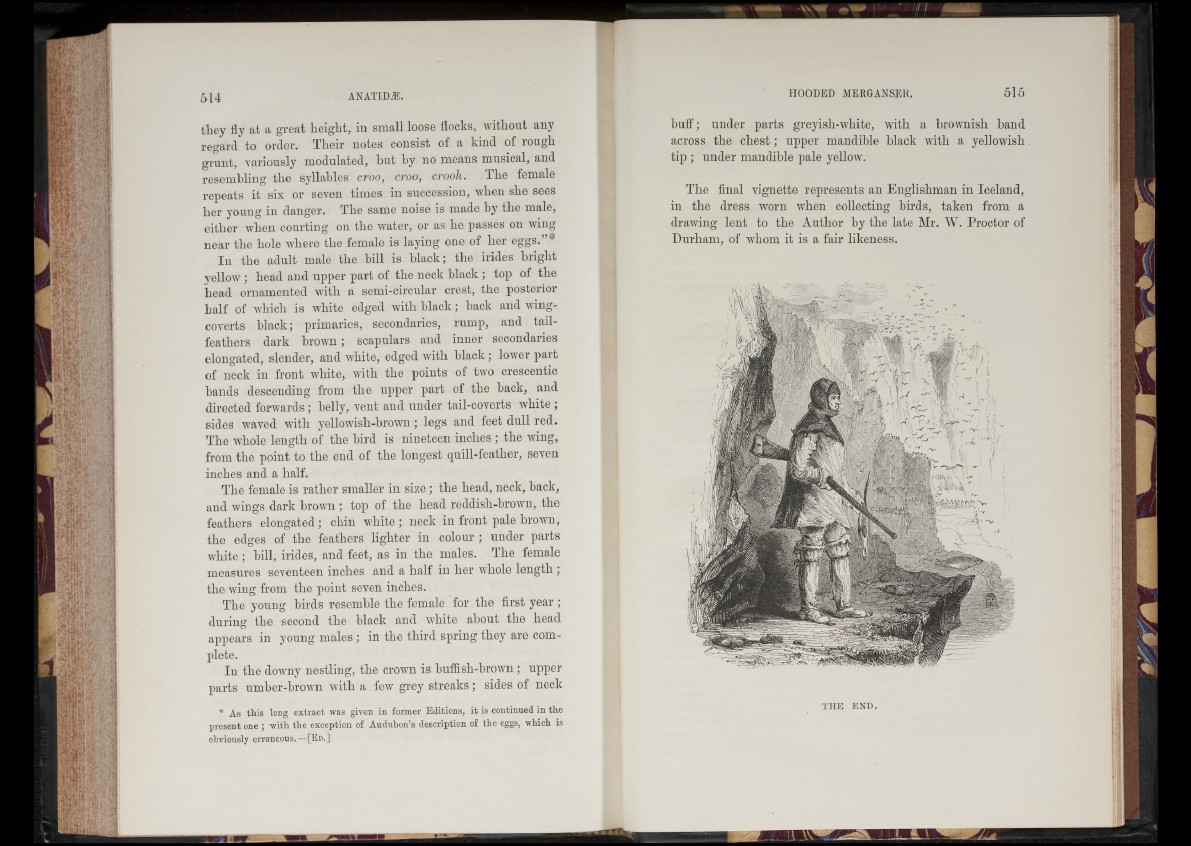
they tiy at a great height, in small loose Hocks, without any
regard to order. Their notes consist ol a kind of lough
grunt, variously modulated, hut by no means musical, and
resembling the syllables croo, croo, crook. The female
repeats it six or seven times in succession, when she sees
her young in danger. The same noise is made by the male,
either when courting on the water, or as he passes on wing-
near the hole where the female is laying one of her eggs.
In the adult male the bill is black; the irides bright
yellow ; head and upper part of the neck black ; top of the
head ornamented with a semi-circular crest, the posterior
half of which is white edged with black ; back and wing-
coverts black; primaries, secondaries, rump, and tail-
feathers dark brown ; scapulars and inner secondaries
elongated, slender, and white, edged with black ; lower part
of neck in front white, with the points of two crescentic
bands descending from the upper part of the back, and
directed forwards; belly, vent and under tail-coverts white ;
sides waved with yellowish-brown ; legs and feet dull red.
The whole length of the bird is nineteen inches ; the wing,
from the point to the end of the longest quill-feather, seven
inches and a half.
The female is rather smaller in size; the head, neck, back,
and wings dark brown ; top of the head reddish-brown, the
feathers elongated; chin white ; neck in front pale brown,
the edges of the feathers lighter in colour ; under parts
white; bill, irides, and feet, as in the males. The female
measures seventeen inches and a half in her whole length;
the wing from the point seven inches.
The young birds resemble the female for the first year ;
during the second the black and white about the head
appears in young males ; in the third spring they are complete.
In the downy nestling, the crown is huffish-brown ; upper
parts umber-brown with a few grey streaks; sides of neck
* As this long extract was given in former Editions, it is continued in the
present one ; with the exception of Audubon’s description of the eggs, which is
obviously erroneous.—[Ed.]
HOODED MERGANSER
buff; under parts greyisli-wliite, with a brownish band
across the chest; upper mandible black with a yellowish
tip ; under mandible pale yellow.
The final vignette represents an Englishman in Iceland,
m the dress worn when collecting birds, taken from a
drawing lent to the Author by the late Mr. W. Proctor of
Durham, of whom it is a fair likeness.
fHE END.